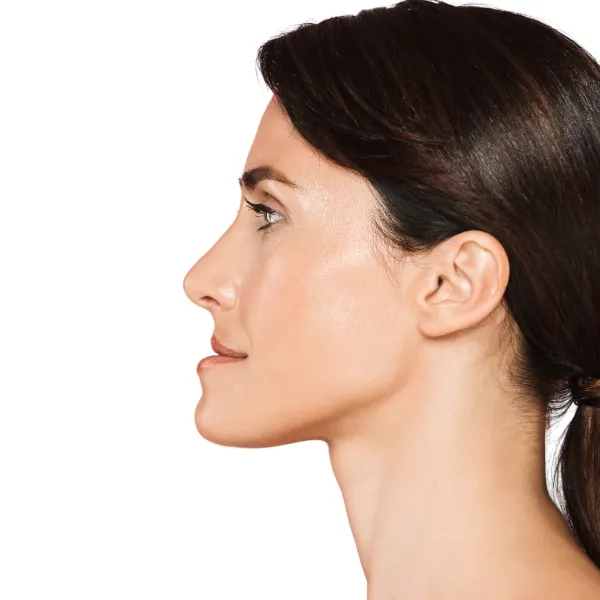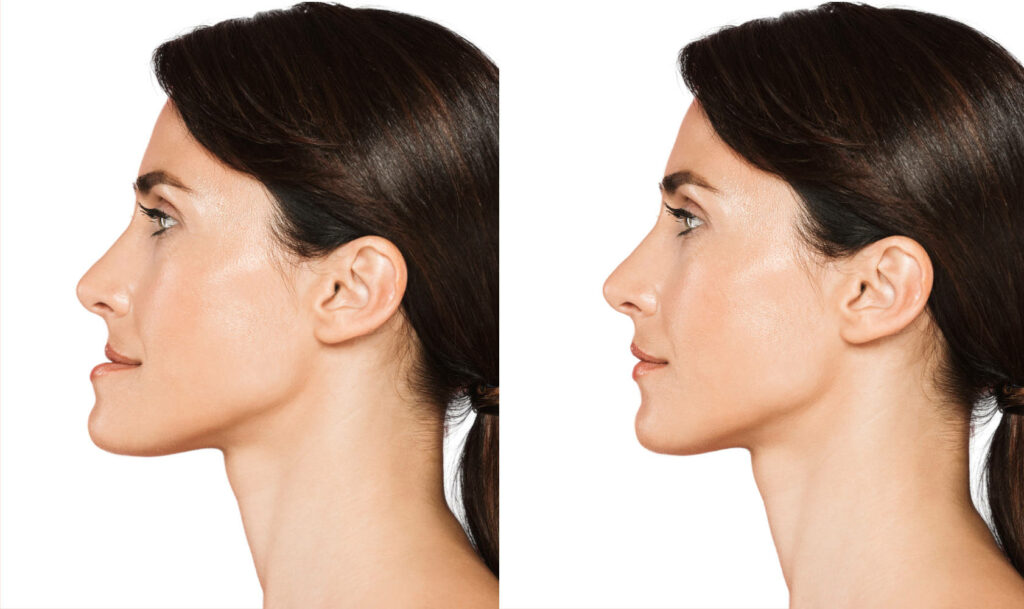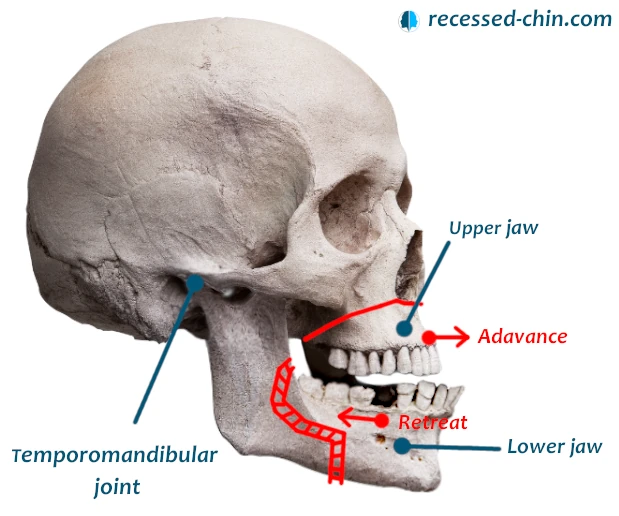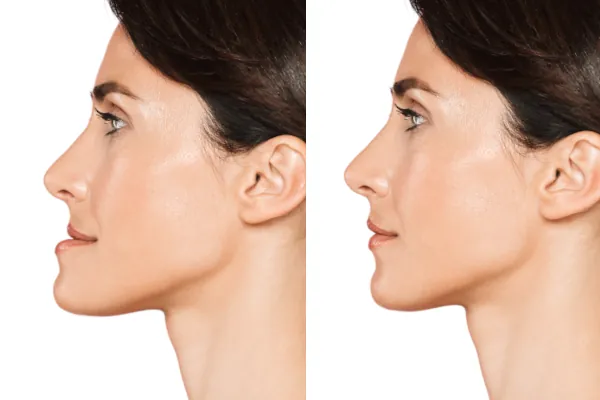CHIN FORWARD
Article published on 02/02/2025
“My chin is forward.”
This is a common complaint in the field of maxillofacial surgery. Behind this phrase lie two very distinct situations:
Chin forward
In this case, the mental bone is prominent and the chin is stretched forward. This is called a chin in a galoche . This type of chin has no impact on chewing, the alignment of the teeth and does not cause joint problems in the jaw. The discomfort is often mainly aesthetic. The forward chin tends to widen the face. The surgeon will suggest a receding genioplasty . During the operation, the surgeon can also increase the height of the chin if the person has a so-called ” short face ” profile .
Lower jaw forward
When the entire lower jaw has undergone an outgrowth in relation to the rest of the face, the mandible moves forward and the upper and lower lips are no longer aligned. This often causes chewing problems, upper and lower teeth that are not aligned and sometimes pain or cracking in the jaw. This is also called prognathism or skeletal Class III . The surgeon will suggest upper jaw advancement surgery, lower jaw recession surgery or bi-maxillary surgery, that is to say on both the upper and lower jaw. The receding mandible can cause the skin under the jaw and the neck to loosen. Some surgeons therefore offer liposuction or a facelift as a complement.

The surgeon will use the X-ray and scan results to suggest genioplasty or jaw surgery.
The chin plays a key role in facial harmony
The chin has a significant impact on facial harmony. This is especially true when viewed from the side. Seen from the front, the chin’s appearance is less noticeable. A prominent chin will appear prominent and can give the face a somewhat directive, authoritarian look. Conversely, a backward chin can give the face a passive appearance. Genioplasty operations have little impact on the width of the face when viewed from the front. On the other hand, a receding lower jaw will tend to widen the lower part of the face when viewed from the front; this is a parameter to take into account. People with a large chin or a prominent lower jaw rarely have a double chin because the skin is relatively stretched.
What operations for the forward chin:
- Genioplasty with removal of part of the chin (antero-posterior reduction of the chin)
- Genioplasty with cutting, refining and repositioning of the chin
- Mandible (lower jaw) surgery
- Bimaxillary surgery (lower and upper jaw)
Whatever the procedure, this type of surgery is not trivial. It changes the appearance of the face and therefore has a strong psychological impact. Jaw surgery generally requires a longer recovery time than genioplasty. The operation requires a hospital stay of 1 to 2 days, time off work, and swelling and bruising in the face. Like any surgery, it presents risks (bleeding, allergies, problems with the anesthetic, etc.). This type of operation requires careful consideration in a calm environment in order to weigh the pros and cons.

Protruding chin reduction surgery (jaw surgery)
When the forward chin reduction does not only concern the mental bone but the entire jaw, 3 types of operation can be carried out:
- upper jaw advancement
- lower jaw recession
- bimaxillary surgery (both at the same time)

References:
Journal of Oral and Maxillofacial Surgery: https://www.joms.org/
American Journal of Orthodontics and Dentofacial Orthopedics: Receding chin, retrognathia, genioplasty. https://www.ajodo.org/


